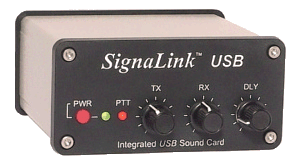One of the first things I did after getting back on the air was try to put together a history of sort (the fruits of which can be seen in some of my posts filed under “History”), with an eye toward joining the Quarter Century Wireless Association (QCWA). My father had always pushed me to join that group (despite the fact that he never joined — in his mind he wasn’t active enough). When I was eligible to join them after 25 years of being a ham, it just seemed strange to be hanging out with a bunch of old men when I was still in my 30’s, so I took a pass. After rediscovering radio and knowing that I’d been hamming it up for 41 years, I figured it was time to take the leap of faith and join QCWA. I look forward to this fall’s annual meeting which is being held a few miles from my house (RI is a wonderful destination place for conferences and such), and I will wear my 40 year pin with pride.
When I did get back on the air, I quickly discovered that most of the satellites I worked before were off the air, leaving mostly FM-only birds with few exceptions. I also discovered that popular HF modes like AMTOR, PACTOR, PACTOR II, Clover, and G-TOR had gone the way of the dodo. 45-baud RTTY was still alive and kicking (oddly enough) as I discovered during the RTTY contest my first weekend back on the air, and there were obviously some new modes that I hadn’t heard before.
Google is always my friend, and I quickly discovered that the signals I was hearing were PSK31 (a digital mode that was just starting to show up as I was going off the air a decade earlier). I also discovered that the old TNC equipment like my PK232 had been mostly replaced by “sound card” DSP. I quickly downloaded a few programs just to hear what was going on by using my PC microphone. Sure enough I could decode the transmissions and even see them on a waterfall display (which was a visual technique used to tune in the signal and discover activity — something else that had showed up during the past decade).
The FT-817ND has always been a very popular radio and has lots of accessories available. One of the more popular sound-card interfaces, made by Tigertronics, had cables built for the FT-817 that pretty much turned things into a turn-key operation. So I acquired a SignaLink USB interface for the 817, and coupled that with a copy of the W1HKJ’s FLDigi program

SignaLink USB Interface
I was in seventh heaven. PSK31 seemed ideal for HF. It didn’t beat the relay in your rig to death ‘chirping’ like AMTOR did, and there was a fair amount of activity. Despite being “in the mud” with my puny 5 watt QRP signal I was having a fair amount of success. But ham radio as I knew from personal experience could be a fickle mistress. Little did I know that a week after meeting PSK31 a new digital mode would catch my fancy!








